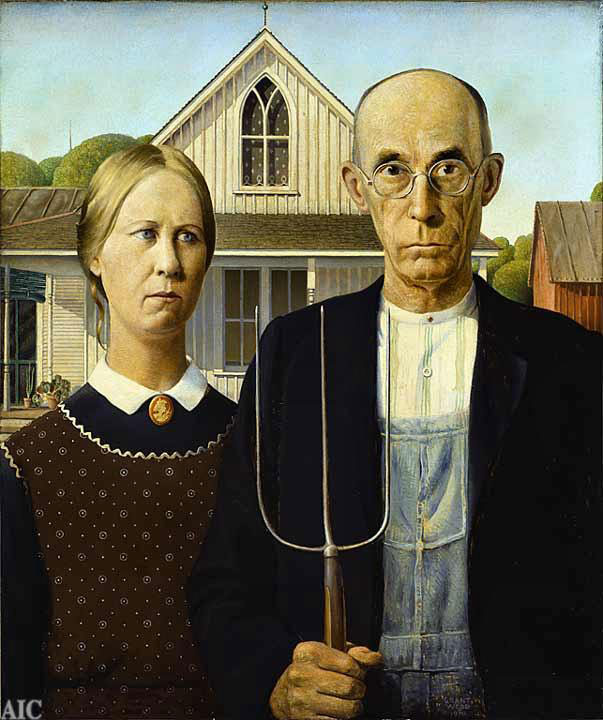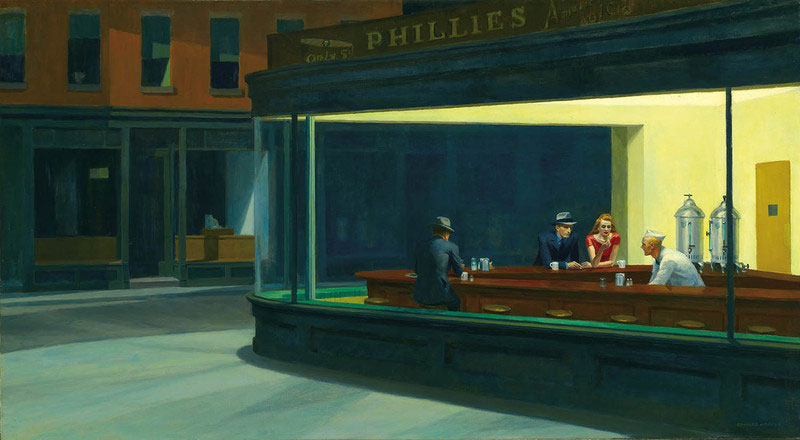

Even during "Hard Times" and wartime, people need to be entertained. The American people in the 1930s and 1940s were no exception. They enjoyed many forms of entertainment, particularly if they could do so inexpensively.
With the addition of sound, movies became increasingly popular. Comedies, gangster movies, and musicals helped people forget their troubles. In the early 1940s, some of the great dramas of American film reached theaters. Radio was also wildly popular, offering many kinds of programs, from sermons to soap operas.
In the 1930s, big bands and swing music were popular, with Duke Ellington, Benny Goodman, and Glenn Miller popular bandleaders. In the 1940s, the bands started to break up, and band singers like Frank Sinatra and Sarah Vaughan went out on their own. War songs became popular.
Among the unemployed in the Depression were artists and performers of many types. Government programs to assist these people resulted in production of plays and artworks for all to enjoy.
The arts, like everything else in the 30's, were dominated by the Great Depression. In the 1930's this discipline was supported by government programs such as the Public Works of Art Project and later the Federal Art Project. The artists employed by these projects (over 5,000 at one period of time) chose themes based on American culture and history. The sculptor, Gutzon Borglum, was able to complete his Mount Rushmore Memorial with funds supplied by the WPA. Other "starving artists" were able to survive the hard times by painting murals on the lobby walls of government buildings. There were some of these individuals who became artists of note, such as Jackson Pollock and Willem de Kooning.American Gothic by Grant Wood
This decade saw the beginning of the American regionalist style with Grant Wood's famous work, "American Gothic". Artists that adopted this style include John Steuart Curry, Thomas Hart Benton, Georgia O'Keeffe with her southwestern themes, and Edward Hopper with his realistic scenes from city life.
Many of the nation's most memorable skyscrapers (the Empire State Building, the Chrysler Building, and Rockefeller Center) were completed in the early 30's. In 1937 the Frank Lloyd Wright masterpiece of home design, "Falling Water", was built. In 1932 the word "mobile" was coined to describe the kenetic sculpture created by Alexander Calder. In 1935 Andrew Mellon gave his $25 million dollar art collection to the American people and contributed $10 million to the construction of the National Gallery of Art in Washington, D.C.

Bibliography
College, Lonestar, "American Cultural History".
http://kclibrary.lonestar.edu/decade30.html, May 28, 2009.
Company,New York, "20th Century History".
,http://history1900s.about.com/library/photos/blyindexdepression.htm. May 29, 2009.
Frank E. Smitha, "Art of 1930".
http://memory.loc.gov/learn/features/timeline/depwwii/art/art.html,Mayl 30, 2009.